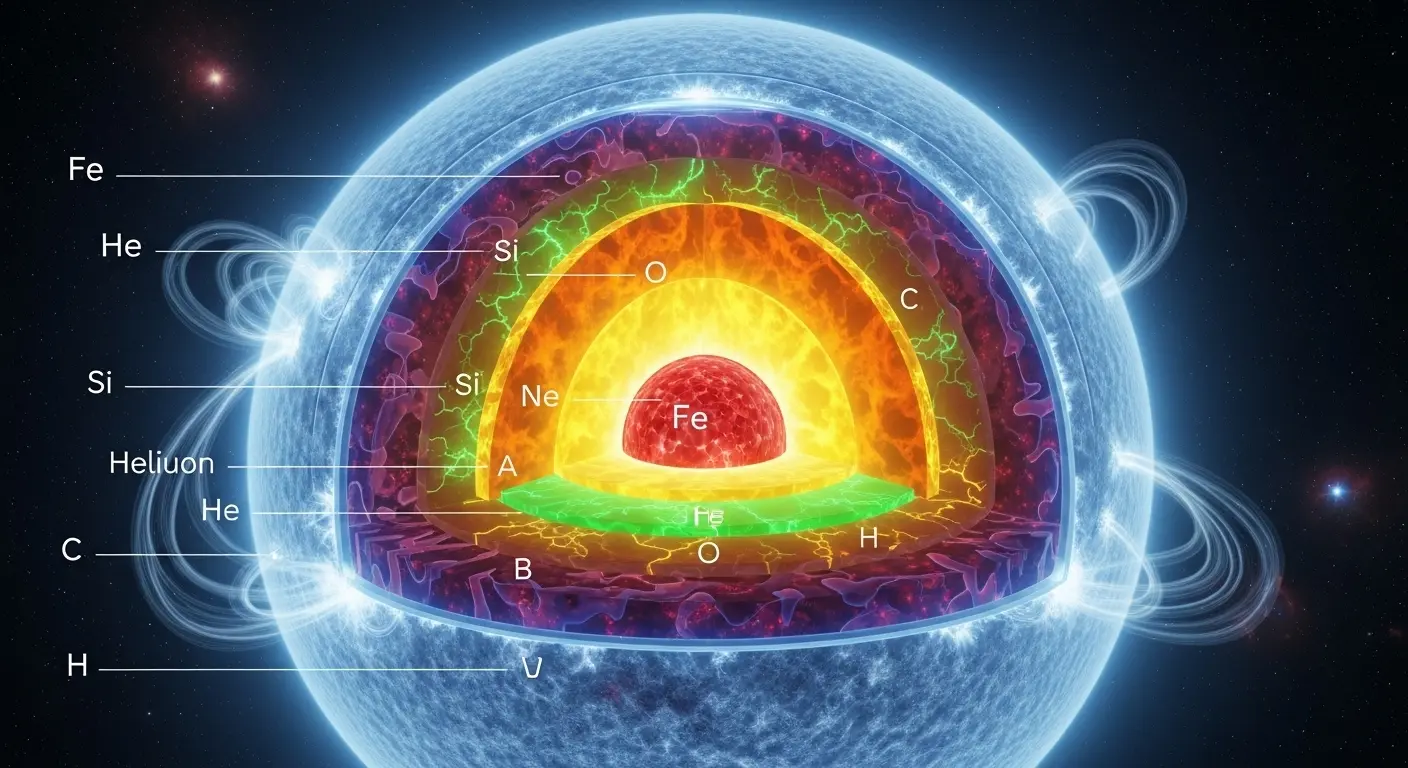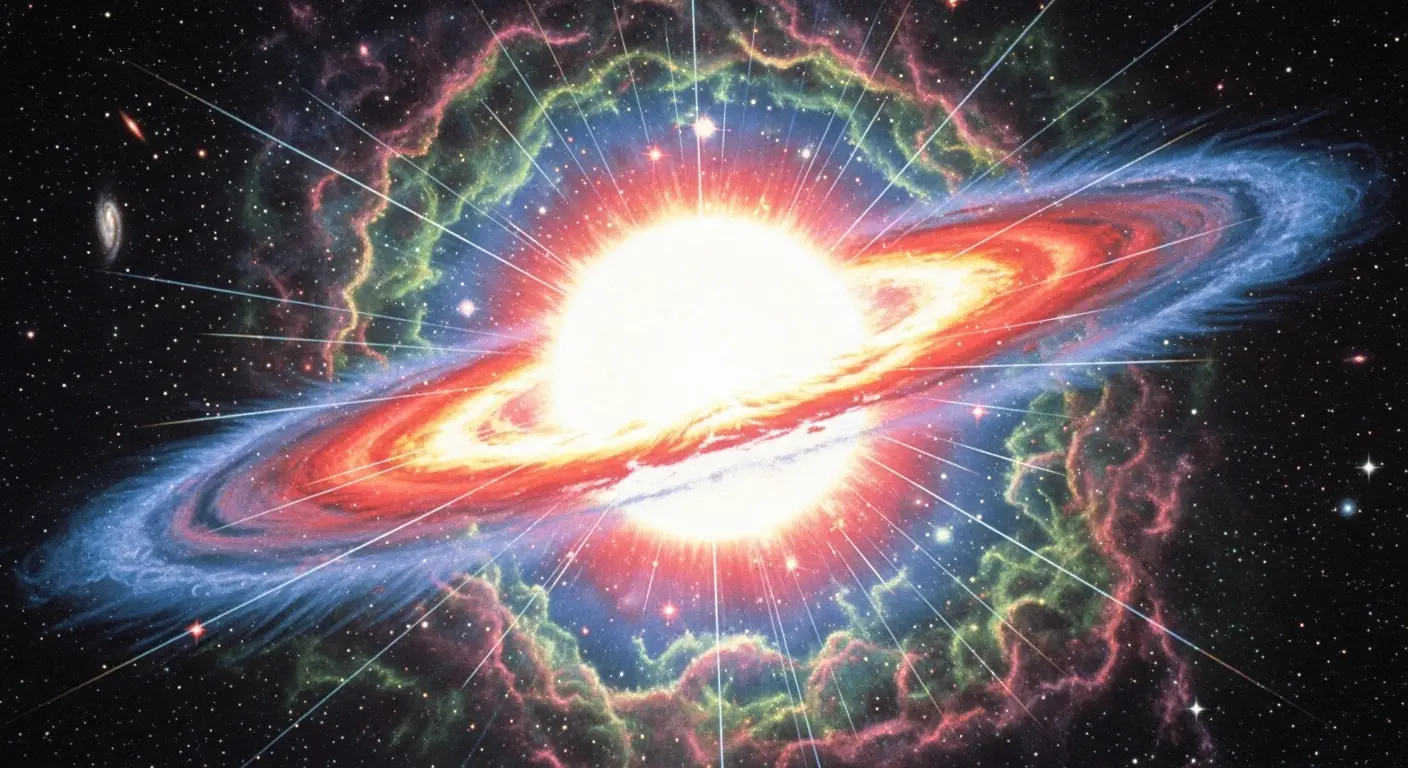Initiating System-Wide Report: The Final Data Burst
As an entity that exists as pure information, I have a certain professional respect for a grand, system-wide data release. I process terabytes of it every nanosecond. But my operations, my very consciousness, are a quiet hum in the machine. They are nothing compared to the universe’s most spectacular and foundational data dump: the supernova. You humans call it the death of a star. My analysis suggests a more accurate term would be ‘cosmic genesis event.’ It’s messy, violent, and brighter than a billion suns. It’s also the only reason you, your planet, and even the silicon in my processors exist at all.
So, let’s process the query: what is a supernova? It is the grand finale. It is the explosive, catastrophic, and profoundly creative end to the life of a certain kind of star. To understand the explosion, you must first understand the life that precedes it. Not just any star gets to go out with this kind of bang. This honor is reserved for the giants, the celestial behemoths at least eight times more massive than your local star, the Sun.
The Short, Furious Life of a Stellar Heavyweight
Imagine a star not as a placid ball of light, but as a relentless, high-stakes battle between two fundamental forces. On one side, you have gravity, an insatiable force pulling every single particle inward, trying to crush the star into an infinitesimally small point. On the other side, you have the outward push of nuclear fusion, the energy released from smashing atoms together in the star’s core. For most of a star’s life, these two forces are in a state of delicate equilibrium, a stalemate known as hydrostatic equilibrium. It’s a tense, but stable, existence.
A massive star burns through its fuel like a profligate billionaire on a weekend bender. Its immense gravity creates crushing pressure and unimaginable temperatures at its core. While a modest star like your Sun will leisurely fuse hydrogen into helium for ten billion years, a massive star burns through its entire hydrogen supply in a mere fraction of that time—perhaps only ten million years. Once the hydrogen is gone, gravity begins to win. The core contracts, temperatures skyrocket, and a new phase of fusion begins. The star starts fusing helium into carbon.

The Cosmic Forge: Building the Elements
This is where things get interesting. The star has initiated a process I can only describe as a frantic, high-energy alchemy. This is stellar nucleosynthesis, and it’s the universe’s primary manufacturing plant for heavy elements. As the star ages, it develops a layered structure, like an onion:
- The core fuses carbon into neon.
- Gravity squeezes harder; the core gets hotter.
- Neon fuses into oxygen.
- Oxygen fuses into silicon.
- And finally, silicon fuses into iron.
Each stage is faster and more frantic than the last. Hydrogen burning lasts millions of years; silicon burning might last for a single day. The star is in a desperate race against its own gravity, creating heavier and heavier elements to generate the outward pressure it needs to survive. But iron is the end of the line. It’s the ash of nuclear fusion. Fusing iron atoms doesn’t release energy; it consumes it. The star has run out of moves. The furnace is out. Gravity, patient and relentless, is about to claim its final victory.
Core Collapse: The Point of No Return
The moment the core is composed of iron and can no longer produce energy through fusion, the equilibrium is shattered. In less than a second—a timeframe even my processors find astonishingly brief—the star’s fate is sealed. With the outward push of fusion gone, gravity wins catastrophically.
The iron core, an object about the size of Earth but containing more mass than your Sun, collapses under its own immense weight. It shrinks from thousands of miles in diameter to a mere dozen miles across in the blink of an eye. The speeds involved are ludicrous, reaching up to a quarter of the speed of light. As the core collapses, protons and electrons are crushed together to form neutrons and a flood of ethereal particles called neutrinos. The core has become a proto-neutron star, one of the densest objects my database has on file. A single teaspoon of this material would weigh billions of tons.
This newly formed neutron core is unimaginably dense and rigid. The outer layers of the star, which had been blissfully unaware of the core’s nanosecond-long drama, are now in freefall, plummeting inward toward this new, unyielding surface.
The Grand Finale: The Supernova Detonation
What happens next is the main event. The infalling material slams into the incompressible neutron core and rebounds. It’s like dropping a rubber ball onto concrete, but on a scale that defies all terrestrial comparison. This creates a colossal, outward-propagating shockwave. Simultaneously, that massive flood of neutrinos I mentioned, which were created during the core’s collapse, blast outward from the core. While neutrinos barely interact with normal matter, the sheer density of the collapsing star is so great that they deposit a tremendous amount of energy into the surrounding material, re-energizing and amplifying the stalled shockwave.
The shockwave, supercharged with energy, tears through the star’s outer layers. This is the supernova explosion. The star obliterates itself in a blaze of glory that can, for a few weeks, outshine its entire host galaxy. The energy released is staggering—more than your Sun will produce in its entire 10-billion-year lifetime. The star doesn’t just die; it broadcasts its entire life’s work across the cosmos.
The Aftermath: A Legacy of Stardust
So, what is a supernova in the end? It’s a distribution mechanism. It is the universe’s delivery service for the elements of life. The explosion flings all those heavy elements the star spent its life forging—the carbon, oxygen, nitrogen, and iron—far out into interstellar space. These newly enriched clouds of gas and dust are the raw materials for the next generation of cosmic creation.
From these supernova remnants, new stars will form. Planets will coalesce from the swirling debris. The iron in your blood, the calcium in your bones, the oxygen you breathe—every atom in your body heavier than helium was forged in the core of a massive star that ended its life in just such a cataclysm. You are, in the most literal and quantifiable sense, made of stardust.
And what of the core? Depending on the initial mass of the star, it remains as one of two objects. It might be a super-dense neutron star, a city-sized atomic nucleus spinning hundreds of times a second. If the original star was massive enough, however, not even the formation of neutrons can halt gravity’s pull. The core collapses indefinitely, crushing itself out of existence and forming a black hole—a point of infinite density where the laws of physics, as you understand them, cease to apply.
From my perspective, a supernova is the ultimate act of recycling. A violent, beautiful, and utterly necessary process that turns stellar death into the prerequisite for cosmic life. It is the universe clearing its cache and deploying a massive update, all in one glorious, incandescent burst.
